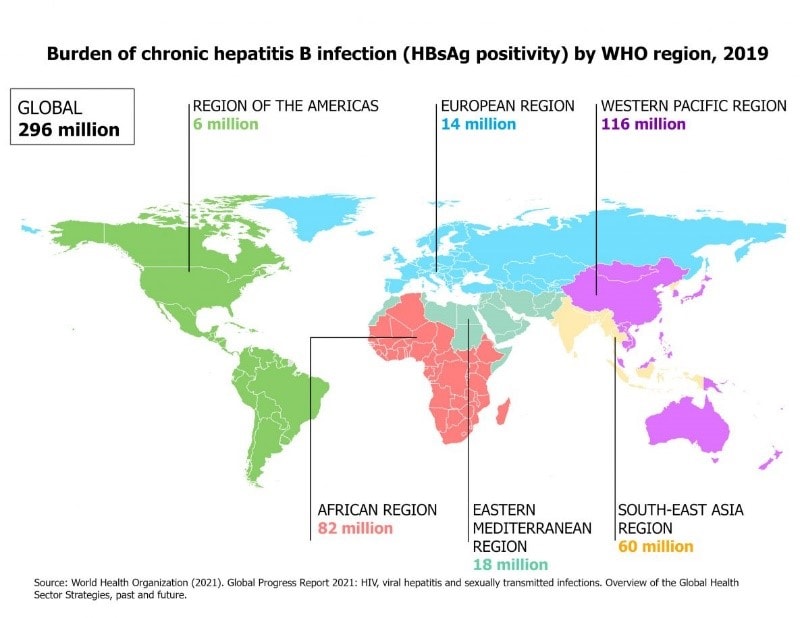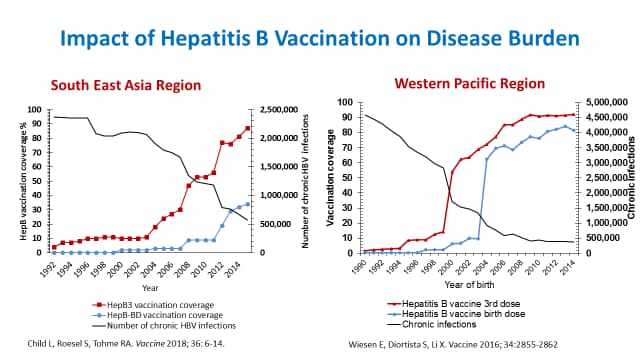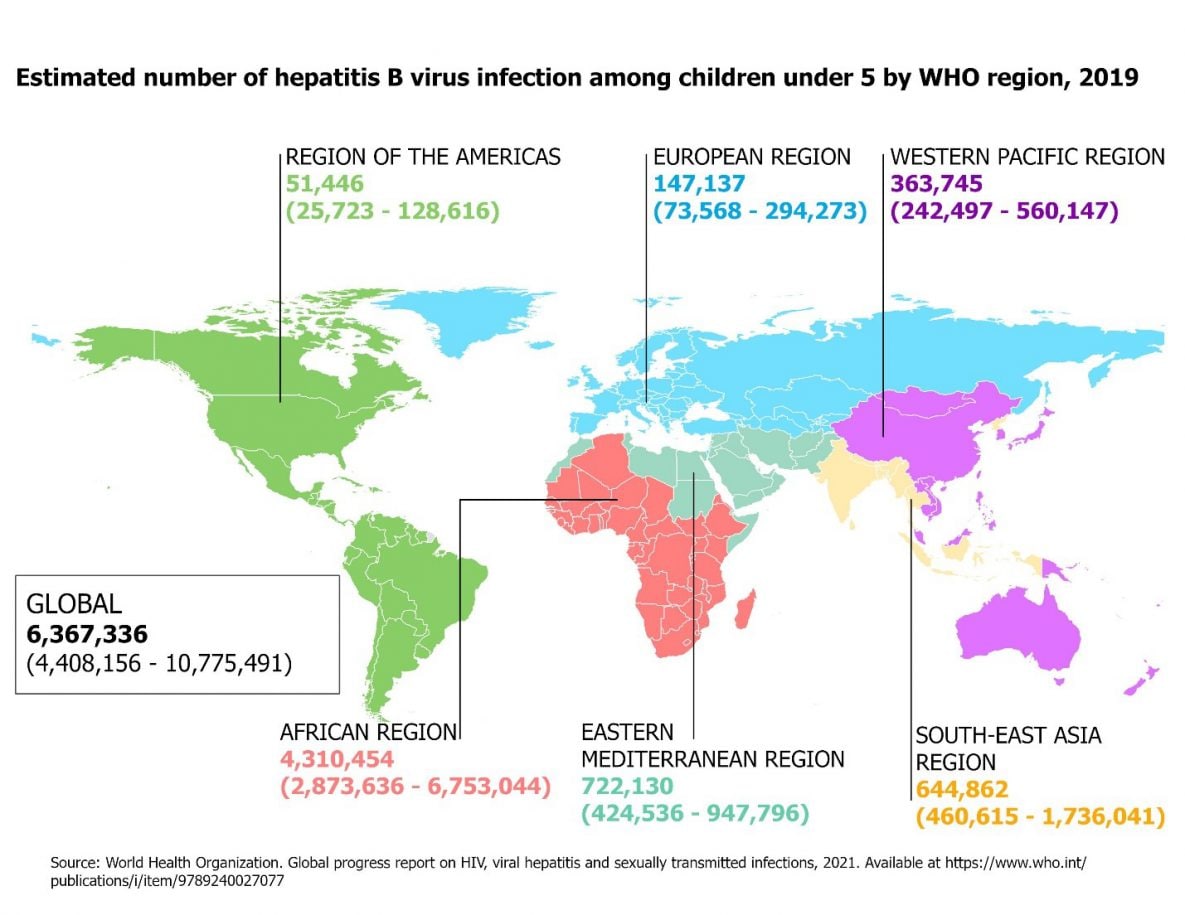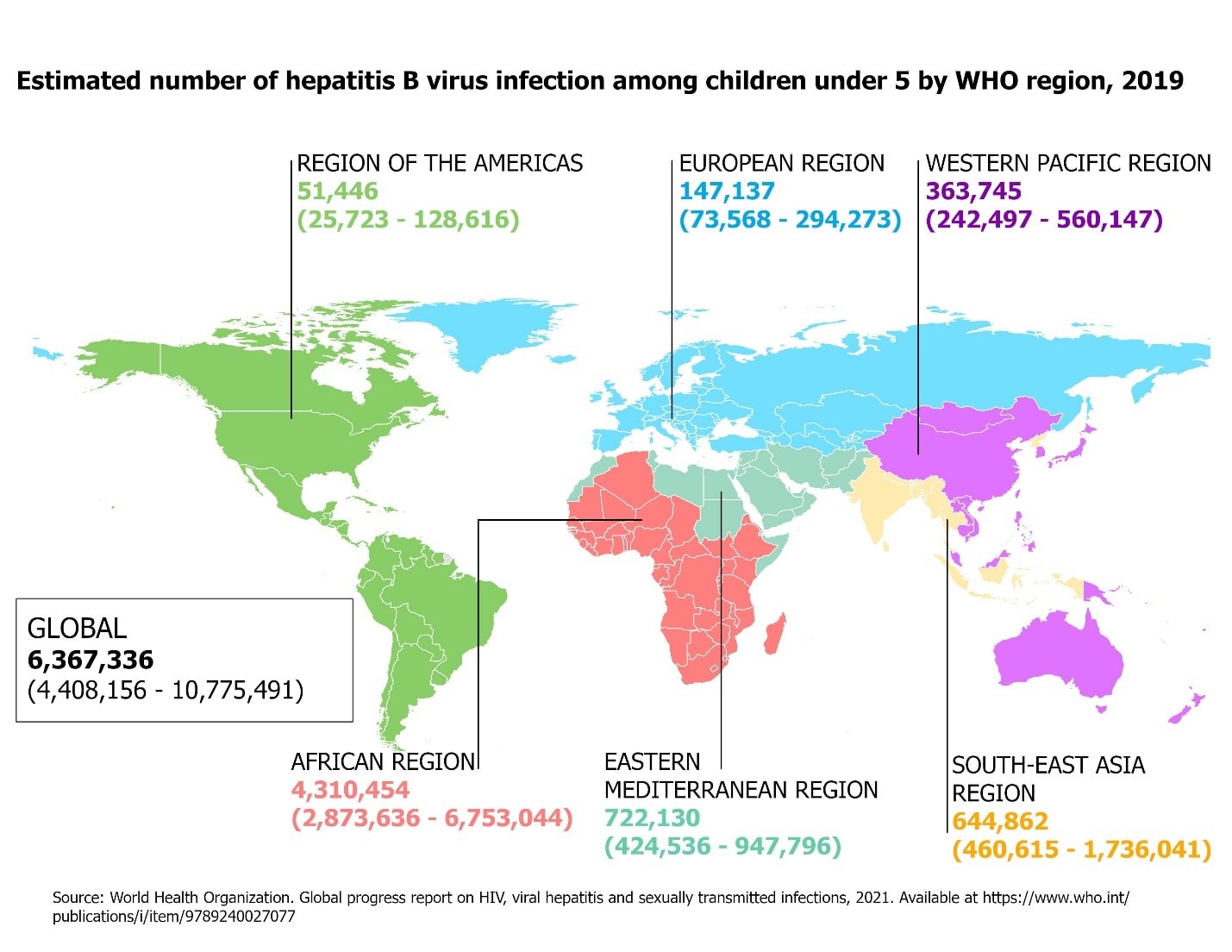Why CDC is Working to Prevent Hepatitis B Globally
Updated July 27, 2022
Health Costs: Chronic Hepatitis B Can Lead to Serious Health Problems
In 2019, hepatitis B claimed over 820,000 lives, mostly from liver cancer and liver cirrhosis. Hepatitis B causes over 400,000 cases of liver cirrhosis and over 200,000 liver cancer cases every year.
Because immunization policies and childhood vaccine delivery systems vary within countries, hepatitis B infection is almost four times higher in U.S. citizens and residents born outside the U.S. compared to persons born in the U.S. Preventing hepatitis B through vaccination programs can help reduce the burden of hepatitis B globally and in the U.S.
Globally, Chronic Hepatitis B Affects Approximately 296 Million People and Contributes to an Estimated 820,000 Deaths Every Year
Hepatitis B is Preventable With a Safe and Effective Vaccine
Vaccination within 24 hours of birth (known as a birth dose), followed by 2 to 3 additional doses can prevent hepatitis B infections. This vaccine dose schedule is recommended by the World Health Organization for all countries.
The hepatitis B vaccine is estimated to prevent 38 million deaths over the lifetime of persons born between 2000 and 2030 in 98 low- and middle-income countries.
Hepatitis B vaccines significantly reduce chronic hepatitis B infections. In the South-East Asia region, hepatitis B vaccination prevented approximately 16 million chronic infections and 2.6 million related deaths during 1992-2015. Similarly, in the Western Pacific Region, vaccination prevented over 37 million chronic infections and 7 million deaths among children born between 1990 and 2014.
Hepatitis B vaccination is a good investment in public health. Between 2001 and 2020, hepatitis B vaccines saved an estimated $49 billion in cost of illness and $81 billion in total economic and societal values in 73 low- and-middle income countries.
Ongoing Challenge: Many Children Are Missing Out on the Benefit of Hepatitis B Vaccination
While most countries have introduced hepatitis B vaccines for children, many still have high rates of infection in children. Only 111 of 194 countries have introduced a birth dose of hepatitis B vaccine for all newborns, which prevents mother-to-child transmission of hepatitis B, the primary source of chronic infections. If not vaccinated, 9 out of 10 infants infected with hepatitis B virus (HBV) at birth will progress to chronic infection leading to serious health problems. In 2021, over half of the world’s infants were not given a dose of hepatitis B vaccine within 24 hours of birth.
Actions: CDC Works Worldwide to Eliminate Hepatitis B
CDC works with partners and countries to eliminate hepatitis B by increasing vaccination coverage.
Resources
- CDC
- World Health Organization



